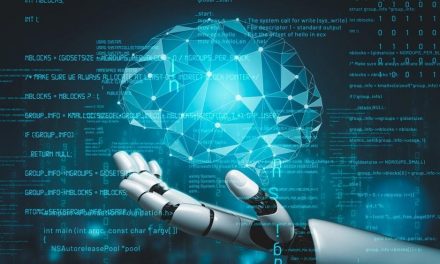In the dynamic landscape of technology, the convergence of cryptocurrency and artificial intelligence (AI) has emerged as a powerful duo, revolutionizing industries and reshaping the way we perceive security and innovation. In this article, we delve into the compelling relationship between cryptocurrency and AI, highlighting their synergistic potential in securing AI systems and driving forward groundbreaking advancements.
Understanding the Intersection of Cryptocurrency and AI
Cryptocurrency, with its decentralized nature and cryptographic principles, has disrupted traditional financial systems and paved the way for secure, transparent transactions. On the other hand, AI has unlocked unprecedented possibilities in data analysis, automation, and decision-making. When these two forces combine, a symbiotic relationship arises, offering unique opportunities to address key challenges and propel transformative change.
Securing AI through Cryptocurrency
Immutable Data Integrity: By leveraging blockchain technology, cryptocurrencies provide an immutable and tamper-resistant record of transactions and data. This capability can be harnessed to enhance the security of AI systems by ensuring the integrity and authenticity of training data, preventing unauthorized modifications or tampering.
Trustworthy Data Sharing: Cryptocurrencies enable secure and verifiable data sharing among multiple parties through smart contracts and decentralized protocols. In the realm of AI, this allows for collaborative efforts and data pooling while maintaining data privacy, leading to more robust and accurate AI models.
Anti-Fraud Measures: Cryptocurrencies incorporate cryptographic mechanisms that can be applied to AI systems to detect and prevent fraudulent activities. By implementing algorithms that analyze patterns, anomalies, and transaction histories, AI can identify potential fraud attempts and mitigate risks effectively.
Advancing Innovation through AI and Cryptocurrency Integration
Enhanced Financial Technologies: The combination of AI and cryptocurrency has the potential to revolutionize financial technologies. AI-powered algorithms can analyze market trends, predict investment opportunities, and automate trading strategies, enabling more efficient and intelligent financial decision-making.
Decentralized Autonomous Organizations (DAOs): DAOs are blockchain-based organizations that operate without a central authority. Integrating AI into DAOs can optimize decision-making processes, automate governance protocols, and enhance overall efficiency and transparency in decentralized ecosystems.
AI-Driven Cybersecurity: Cryptocurrency and AI can join forces to fortify cybersecurity measures. AI algorithms can analyze vast amounts of data, identify patterns, and detect potential threats in real-time, while cryptocurrencies provide secure transactions and incentivize participation in security networks, creating a robust defense against cyberattacks.
Opportunities and Challenges on the Horizon
Regulatory Frameworks: The integration of cryptocurrency and AI poses challenges in terms of regulatory frameworks. Governments and regulatory bodies need to adapt and develop comprehensive guidelines to ensure responsible use, protect consumer interests, and mitigate risks associated with these technologies.
Ethical Considerations: The ethical implications of combining cryptocurrency and AI must be carefully addressed. Transparency, accountability, and fairness should be embedded in the design and deployment of AI systems, ensuring that they uphold societal values and avoid perpetuating biases or discrimination.
Scalability and Efficiency: As the adoption of AI and cryptocurrency expands, scalability and efficiency become critical factors. Innovations such as layer-two solutions and improved consensus mechanisms can address these challenges, enabling seamless integration and optimal performance.
Conclusion
The synergy between cryptocurrency and AI represents a paradigm shift in technology, offering immense potential to enhance security, drive innovation, and reshape industries. By leveraging the strengths of both domains, we can unlock new possibilities, revolutionize financial systems, fortify cybersecurity measures, and propel society into a future where trust, efficiency, and intelligence converge.





